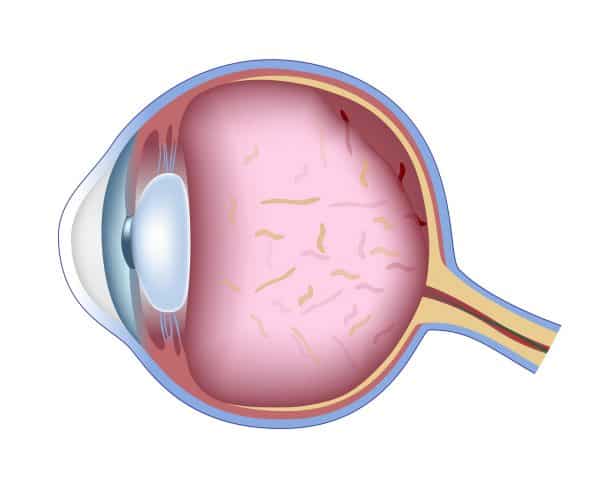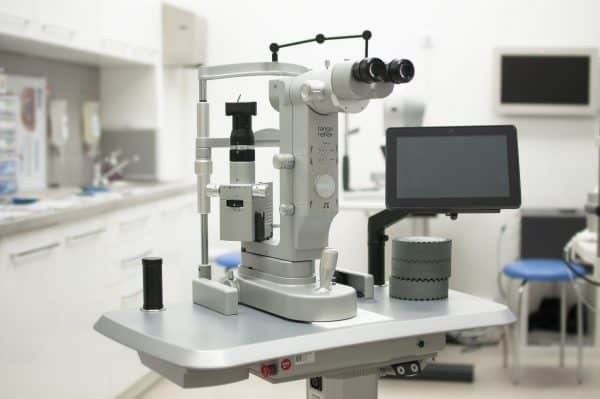Laser vitreolysis
Laser vitreolysis is a minimally invasive procedure leading to the vaporization of floaters or their fragmentation and displacement.
Vitreolysis is performed using a dedicated Tango Reflex™ laser by Ellex.
Laser vitreolysis is a minimally invasive procedure leading to the vaporization of floaters or their fragmentation and displacement.
Vitreolysis is performed using a dedicated Tango Reflex™ laser by Ellex.
The vitreous body is a jelly-like substance consisting of water, hyaluronic acid and collagen. As you age, your eye structures also develop degenerative changes. When the vitreous body becomes unstable, collagen fibres collapse and stick to one another forming lumps and bonds. These changes cast shadows onto the retina, seen as specks, strings and cobwebs, which are called floaters.


Image seen by a patient with floaters.
During evaluation for the procedure, a full ophthalmic examination is performed. If necessary, optical coherence tomography (OCT), ultrasound scan and Goldmann triple mirror examination are also conducted.
The following aspects are taken into account:
The extent of the procedure, number of required sessions and expected outcome will be discussed with you.
The vitreolysis procedure is performed in outpatient settings. There is no need for hospitalisation.
Directly before the procedure, the doctor administers eye drops that dilate the pupil and numb the eye. The procedure takes 20-60 minutes on average. A special contact lens is put in the patient’s eye which makes floaters visible. The doctor then aims at the floaters with a laser beam.
Pupil-dilating eye drops work for approximately 24 hours. During that time, you should not drive a car or other motor vehicles.
Patients usually need 1-3 sessions; however, the number of sessions and the extent of the procedure are discussed with each patient on an individual basis before the first procedure.

You may feel discomfort immediately after the procedure; you can also develop a red eye, tearing and transient blurry vision.
The outcome of the procedure can be assessed not sooner than after 24 hours, when pupil-dilating drops wear off.
You should follow your doctor’s instructions.
As any procedure, vitreolysis is associated with a risk of complications. These include damage to the retina and the natural lens. However, complications are extremely rare.
At our centre, evaluation for vitreolysis and the procedure itself are performed by dr Wojciech Adamski and dr Andrzej Dmitriew.
Want to learn more? Call us on +48 616006918
Wielkopolskie Centrum Medyczne
Sp z o.o. S.K.A
st. Bolesława Krzywoustego 114
61-144 Poznań, POLAND
Hospital hours:
Mon-Fri 8:00 – 20:00
Sat 8:00 – 16:00
Contact us to arrange a visit or to learn more!
Write to us